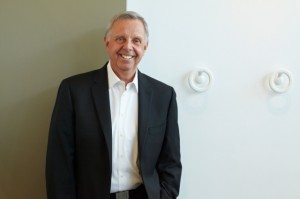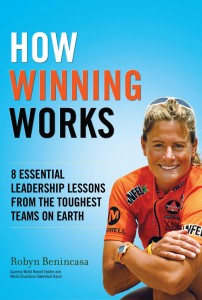
New York Times bestselling author Dan Ariely recently released another thought-provoking book, The (Honest) Truth about Dishonesty: How We Lie to Everyone – Especially Ourselves. Dan was kind enough to answer some questions. If you are not familiar with Dan, you should read his bio fully so that you understand the unique life experiences that formed his frame of reference.
Dan’s research on dishonesty is so wide-ranging that one could write several books on the topic! As such, a number of my questions are outside of the content of the book in order to stimulate further conversation.
The book opens with a discussion of Enron and how you first became interested in the subject of dishonesty. In Chicago, where Arthur Andersen was once based, the issue of Arthur Andersen’s demise while McKinsey survived with barely a scratch is still a frequent conversation topic. Did your initial research indicate anything about this specific topic?
As in the case with Enron, the consequences of our actions are frequently unclear; it could just as easily have been McKinsey to take the fall, but there was no indication of who would be responsible at the time that the dirty dealings were taking place. What is clear, however, is that when we make the decision to be dishonest, we are not thinking about consequences. When we see our peers cheating and getting away with it, and even being rewarded for less-than-angelic behavior, it begins to feel like an acceptable modus operandus. In other words, cheating becomes the new moral standard. In our studies on dishonesty, we find that the risk of being caught is largely irrelevant to people’s actions and that they can even ignore them altogether – especially when the consequences are vague and undefined.
You mentioned Marilee Jones, former admissions dean at MIT who encouraged people not to overstate their credentials while misrepresenting her own. Scott Thompson, former CEO of Yahoo!, was recently dismissed for an inaccurate bio. What forces are at play with these kinds of incidents?
With all acts of dishonesty, there is a motivation to benefit from our dishonest actions. On top of that, I suspect that there are all kinds of fuzzy rules about what is acceptable and what is not (and in CVs, particularly, there are no official guidelines dictating the rules). We are incredibly adept at justifying our actions (i.e., if I am working on an academic paper, does it count as a “Working Paper”?), and one justification quickly leads to the next. Once you’ve gotten away with the first dishonest step, escalation comes easily. These rationalizations add up and we wind up sliding down the slippery slope.
What is a person with a tendency to be more honest than average to do in this environment?
I think that that some people may be generally more honest than others, but even the most honest people succumb to the temptation to cheat when they are placed in the right circumstances. To reduce the likelihood that we will fall prey to these forces, we can create rigid and precise personal rules that guide our actions, particularly when we are in situations that tempt us to cheat. If we think we may be more likely to likely to lie to our significant others after a grueling day at the office, we can remind ourselves to be more honest when we walk through the front door in time for dinner. In the professional realm, we can try to reduce (and when feasible, eliminate) conflicts of interest.
With the incidents that you admitted to in the book (MENSA test on airplane, Air India, etc), has anyone perceived you differently or treated you differently due to your writing about them?
I am sure everyone loves me and no one thinks anything bad about me.
How has writing this book changed your behavior in terms of perceiving others and/or your own personal actions?
There is a high personal cost to thinking about dishonesty all the time. I am now excruciatingly aware of the conflicts of interest that my advisors (like doctors, dentists, etc.) face, and find myself being more suspicious of them. This becomes particularly unpleasant when the social aspect of preserving a relationship suffers because of a focus on such conflicts. I know that a treatment being prescribed by my doctor may benefit my doctor more than it benefits me, and my research has forced me to question every piece of advice that may be plagued with a conflict of interest.
I have also created stricter rules for myself in this regard. For example, in an effort to avoid any conflicts of interest in my own life, I refuse to do consulting for example.
I lived in the New York City area (Hoboken, NJ to be completely honest) during the 1990’s when Rudy Giuliani implemented the Broken Windows Theory with the New York City Police. I personally experienced the positive impact it had on lowering crime rates. You stated, “Although the Broken Windows’ Theory has been difficult to prove or refute, its logic is compelling.” Can you please elaborate on your thoughts on this difficulty?
I rely on experiments as a way to support or refute my intuitions about how we think and how the world works. Experiments are useful because, when done right, they can provide insight into our behavior in ways that mere observation simply can’t. There are many factors that could have contributed to the decrease in crime when the Broken Windows Theory was implemented in NYC, and we have no way of knowing whether the intervention was, in fact, the cause. While the regulations could have had an effect on crime rates, it also could have been another incidental change (or expectation) that corresponded with the timing. There could have been demographic shifts, economic changes, improvements in other areas, and so on that may have contributed to the decrease in crime. However, imagine that Giuliani had implemented the Broken Windows Theory randomly in some parts of the city and not in others, and then followed the crime in each area separately. If we saw a decrease in crime where it was implemented, we could reasonably conclude that the Broken Windows Theory was the cause. However, without this type of controlled experiment, there is simply no way to fully understand the root of the shift.
Some of your observations are statistical, while others are purely personal observational, like students promising to not visit non-class related websites during class and then violating the promise. There is a famous quote, “There are three kinds of lies: lies, damned lies and statistics.” In your opinion, is it possible that some disciplines rely too heavily on statistical analysis instead of basic common sense observations causing potential undesirable effects?
There are undeniable flaws in the shifty use of statistics (and they can be easily manipulated when put in the wrong hands), but if I had to choose between observations and experimentation, I would take data over personal observations any day. I do believe in the strength of personal observations, as it gives facts both depth and illustration, but I would be highly concerned about any arguments that are based solely on observations.
Google (GOOG) prices Google Adwords internally and self-reports it for each individual merchant with little or no outside checks and balances. Much has been written about the potential issues of click fraud. Based on processes with no transparent check and balance mechanism, what are the incentives for one to be more honest or dishonest?
I am not an expert on Adwords, but an environment where actions are multiple steps removed from money and are about clicks – and without transparency – seems like danger zone to me.
In your research, did you find anything regarding the detection of dishonesty? Would a Bernie Madoff sized lie typically be harder to detect than a little white lie?
The question regarding the probability of being caught and the size of the potential punishments are very important. We looked so far only at the probability of being caught and found that it has no effect on the amount of dishonesty. Next, I hope to also study the effect of potential punishments.
Some have asserted that the issues of honesty and/or lack of detection of financial inaccuracies have played a role in overpricing events surrounding certain Initial Public Offerings (IPOs) of stock in the Internet era. Could you please share your thoughts and / or research in this area?
Without giving any particular example (and without any explicit research to support my opinion), I suspect that under-regulation of these “inaccuracies” is certainly a factor in the continuance of dishonesty in the workplace, and the social environment where some banks define the acceptable level of behavior for other banks is another contributor. In these situations, workers have lots of room to rationalize, they see their peers taking advantage of the flexibility, and they see no disadvantages to overpricing. There are no losers, and no one gets hurt.
Since sending the final draft of this book to the publisher is there anything you would like to add knowing what you know now?
Since finishing the book, I have had the opportunity to talk to a few “big cheaters” – people who acted very badly, got caught, and wound up in prison for a long time. My discussions with these individuals shows very clearly how good people can get trapped in bad situations and take one step in the wrong direction, rationalize their actions, take another step, and so on. And although they only take one misstep at a time, the trend escalates and at some point they find themselves in terrible situations with no escape.
From an outside perspective, we can easily look at the sequence of actions and say to ourselves that we could have never found ourselves at the end of these paths. But the big cheaters did not start stealing millions or misleading their shareholders. They started with one wrong step, and this is something that under the “right” conditions we could all engage in.
What advice would you give to new nonfiction authors seeking to write successful books?
I’m not sure that I am in any position to give advice, but what works for me is a mix of social science research, stories that link these to our daily realities, and implications for daily life.
————————————————————
I would like to thank Dan Ariely for his time and thoughtful answers. It would be interesting if everyone reading Dan’s book watched the classic movie Used Cars (Rated R) on DVD and used it to discuss the concepts in the book. It is possibly the best movie on trust and honesty issues ever made – back when movies still had a plot. It can create a basis for creating a larger dialogue about the issues in Dan’s book! Go purchase a copy of the book to read now! I look forward to learning more about his important research in this arena.
 Apple appointed Susan L Wagner to their board of directors yesterday and people have been contacting me to ask if that is the same BlackRock I once worked at in the 1990’s. The answer is yes! Here is the announcement:
Apple appointed Susan L Wagner to their board of directors yesterday and people have been contacting me to ask if that is the same BlackRock I once worked at in the 1990’s. The answer is yes! Here is the announcement:



